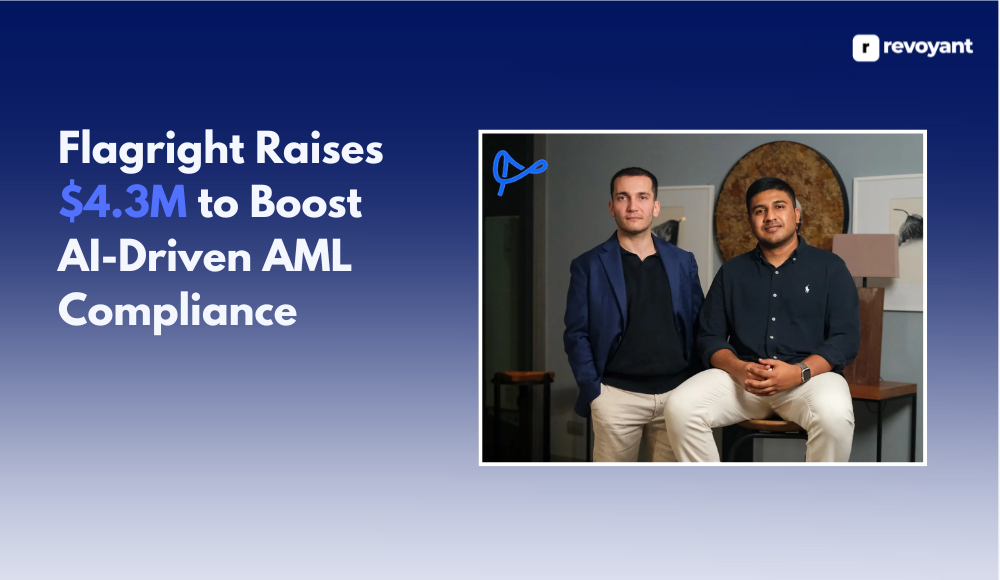Finding the right information can be hard. Carbon makes it easy to use external data with LLMs. This article shows how to use Carbon to connect external data to LLM easily. Keep reading.
Key Takeaways
- Carbon AI helps Large Language Models (LLMs) use outside data quickly. It uses tools like JavaScript SDK, webhooks, and more.
- With Retrieval-Augmented Generation (RAG), Carbon AI can find information and make smart answers fast. This makes models smarter by mixing search and machine learning.
- Carbon’s system keeps user data safe while pulling facts from many places for clear and unbiased answers.
- Chatbots and customer service can work better with quick responses thanks to Carbon AI. Also, it helps in creating content that is rich with accurate details from various sources.
- For research or making new articles, Carbon speeds up finding trusted info without wasting time or resources.
Overview of Carbon AI for LLMs
Carbon AI makes large language models smarter by connecting them to outside data fast. It uses tools like JavaScript SDK, webhooks, and content retrieval methods to get the job done.
Implementing the JavaScript SDK
Using JavaScript SDK, users set up custom flows. It lets them query data from any source. Here’s how to do it:
- Download the JavaScript SDK from the official website.
- Install it in your project using a package manager like npm or Yarn.
- Initialize the SDK with your project’s API key for security.
- Set up OAuth 2.0 to connect securely with external data sources like Google Drive.
- Use hybrid search features to make semantic and keyword searches.
- Connect with vector databases or use Carbon’s database for fast results, under 15ms.
- Query embeddings from various data sources for detailed analyses.
- Automate content retrieval using built-in webhooks for real-time updates.
Setting up webhooks
Setting up webhooks lets you get instant messages when your data changes. This keeps your system in sync.
- Start by choosing the events you need notifications for. Pick actions like content uploads or updates.
- Use OAuth services to keep your connections secure. OAuth checks who is asking for access.
- Enter the URL where you want to receive webhook events. Make sure this URL can handle incoming HTTP POST requests.
- Select managed OAuth if you want extra help setting this up, or go custom for more control.
- Test your webhook by sending a fake event from Carbon AI. See if your system gets the message right away.
- Look out for SOC 2 compliance in webhook services. It means they protect your data well.
- Adjust settings as needed based on the feedback from tests to make sure all types of data changes alert you.
This process ensures that every time something important happens, like a document change, you know fast and can act right away.
Retrieving content
Retrieving content uses different methods. It cleans, chunks, and embeds data to make it ready for AI. This process makes sure that the information is neat and easy to handle. For safety, all details and access keys are locked up tight whether stored or sent.
Carbon’s system never learns from customer data. Instead, it fetches needed content smartly without mixing in personal info. This means every search through documents, web scraping, or data connectors is clean and private.
Users get precise answers quickly because of this careful handling of their questions and searches.
Key Features of Retrieval-Augmented Generation (RAG)
Retrieval-augmented generation (RAG) combines searching with machine learning to make Large Language Models smarter. First, it finds relevant information; then, it creates text that’s easy to understand and fits the context.
Phase 1: Retrieval Phase
The retrieval phase starts with a search. The system looks for information that matches the user’s question. It uses semantic search to understand the meaning behind words. Imagine you ask about “fast cars.” The system finds texts and data about speedy vehicles, not just those two words.
Find the right info fast.
It also uses databases like Qdrant to help in this search. Qdrant sorts lots of data quickly, making sure the most useful answers come first. This phase makes sure the language model has what it needs to answer questions smartly and correctly.
Phase 2: Generation Phase
In this phase, the model uses found data to make answers. First, it looks at what it found during its search. Then, it combines this with its own knowledge from training. This helps create answers that fit your questions better.
Think of it as a smart friend who reads fast and then explains things in a simple way.
For example, if you ask about climate change effects on polar bears, the model first gathers recent articles and studies. Next, it forms an easy-to-understand answer about ice melting and bear habitats changing.
It does all this quickly, using AI power from tools like transformers and neural networks to think and respond almost like a human expert would.
Advantages of Using RAG with Carbon AI
Carbon AI brings power to large language models with RAG—making answers sharp and smart. It cuts down search time, boosts special knowledge, and gives balanced views with less bias.
Focused and Sharp Answers
Using Carbon AI with retrieval-augmented generation helps in giving focused and sharp answers. It makes sure that large language models pull the most relevant data quickly. This leads to answers that are clear and direct.
Think of it as asking a smart friend a question. You get straight, useful replies without extra chatter.
With Carbon AI, your questions hit the target every time.
This approach doesn’t just guess what might be right. It uses smart tech like embedding models and natural language processing to dig through tons of info fast. Then, it finds exactly what you need.
So, whether it’s for customer service or sorting through big reports, expect quick and precise answers every time.
Contextual Wisdom and Specialized Smarts
Carbon AI gives smart tools that know just the right facts from huge piles of data. Think of it as having a map that points to where treasures are buried. This smart tool digs up the exact piece of gold—the info you need—fast.
For tough topics, it’s like having an expert whispering in your ear.
This magic happens because Carbon AI is great at understanding and finding connections between pieces of information. It’s not just about searching; it’s about knowing what’s important and why.
So, when you ask something complex, Carbon AI grabs everything related and cooks up answers that make sense. It mixes deep knowledge with quick thinking to give sharp insights every time.
Speed and Resource Efficiency
RAG with Carbon AI works fast. It gives sharp answers quickly. This saves time and uses less computer power. Faster results mean chatbots like SiteGPT can handle more questions at once.
This makes everything work better without slowing down.
File uploads are now easy for these chatbots too. They can share files fast, making data move smoothly. With Hybrid search, finding things is quick whether you use keywords or look for meaning in words.
This mix helps get the right info without wasting time or resources.
Balanced Views, Minimized Bias
Carbon AI ensures that answers are balanced and show less bias. This happens because it pulls data from many sources. So, users get a wide range of views. Also, Carbon follows strict rules to protect user data and is SOC 2 compliant.
This means they handle data safely and fairly.
Diverse inputs lead to balanced outputs.
Using this approach, the technology can give answers that consider different sides of a story or problem. It avoids leaning too much one way by mixing various bits of information. Plus, adding new connectors regularly keeps the information fresh and broad-ranged, making sure no single viewpoint takes over.
Practical Applications of RAG in Various Industries
RAG turns up everywhere, from answering customer questions fast in customer support to digging deep for facts in school studies. It also spins fresh stories for websites and blogs, making sure readers get what they’re after—quick and smart answers.
Customer Service Automation
Customer service automation brings chatbots like SiteGPT to life. These chatbots handle file uploads easily. They use retrieval augmented generation for better answers. High availability, quick responses, and low delays make them work well.
They also search data in smart ways with a Qdrant database.
This setup helps customer service in many ways. It gives clear, fast answers to questions. The system knows a lot about many topics. It works quickly and uses fewer resources. This way, companies can offer help without making people wait or using too much power.
Academic Research
In academic research, scholars need reliable data. They use large language models (LLMs) to analyze texts and find useful information. For example, a history professor might look into old newspapers for research on the 1920s.
This process involves natural language processing (NLP), document management, and machine learning algorithms. Carbon AI helps by connecting these researchers to external data sources quickly.
It encrypts their searches and results, keeping their work safe.
Researchers can set up webhooks and use JavaScript SDK with Carbon AI. This way, they fetch articles or data without losing time. They get focused answers that are sharp and accurate for their studies in history, science, or literature.
Content Generation
Content generation changes with Retrieval-Augmented Generation (RAG) by Carbon AI. This tool uses large language models (LLMs) to make writing faster and smarter. Writers use it to pull data quickly from many places on the internet.
They get facts, stats, and details without spending hours searching. Carbon AI makes this easy with its APIs for embedding generation, text generation, and more.
For example, a writer creating an article on climate change can get recent stats in seconds. They just type what they need into RAG powered by Carbon AI. It finds reliable data from trusted sources fast.
This means articles are richer and more accurate.
Conclusion
Carbon AI makes it easy to link outside data with large language models. Users enjoy fast access and clear insights, thanks to smart tools like JavaScript SDKs and webhooks. With RAG, answers come quickly and are right on point.
This tool is great for many jobs – from handling customer questions to making new content. So, Carbon stands out as the quickest path for adding external info into LLMs’ vast knowledge pool.
(Image credit: Carbon AI)
Frequently Asked Questions
1. What is Carbon and how does it connect external data to LLMs?
Carbon is an AI-powered tool that utilizes advanced technologies like indexing algorithms, transformer models, and k-nearest neighbors for efficient data ingestion. It swiftly connects unstructured data to Large Language Models (LLMs) such as BERT or OpenAI’s GPT.
2. How does Carbon ensure the reliability of its process?
Through meticulous preprocessing, prompt engineering, clustering techniques, and effective role-based access control measures; Carbon ensures high reliability in executing functions. It also uses version control systems for traceability and maintains a clear data lineage.
3. Is using Carbon safe when considering data privacy?
Absolutely! With attribute-based access control (ABAC) measures in place along with DevSecOps practices, user-friendly parameters are set ensuring top-notch security while maintaining usability.
4. Can I use this system in real-time applications like virtual assistants or question-answering systems?
Yes indeed! The cloud-based nature of Carbon allows seamless integration into real-time applications like virtual assistants by leveraging asynchronous operations and load balancing features for scalability.
5. Does Carbon support different types of data formats?
Certainly! Besides handling text through tokenization processes and linguistic analysis methods; it can manage PDFs too – parsing them semantically to retrieve pertinent information efficiently.
6. How does the entity disambiguation feature work in carbon?
Entity disambiguation works by applying machine learning models on parsed vectors representation from the unstructured data source – thus enabling accurate nearest neighbor search results during internet searches.



